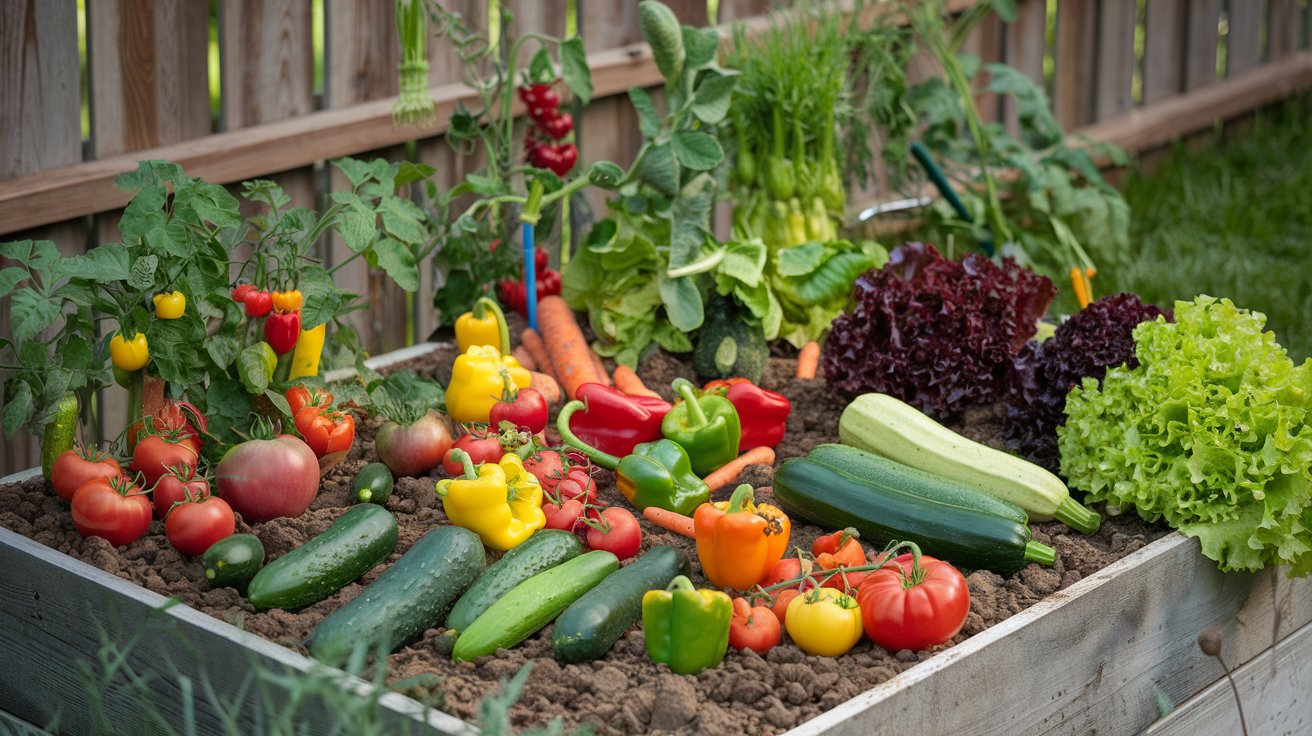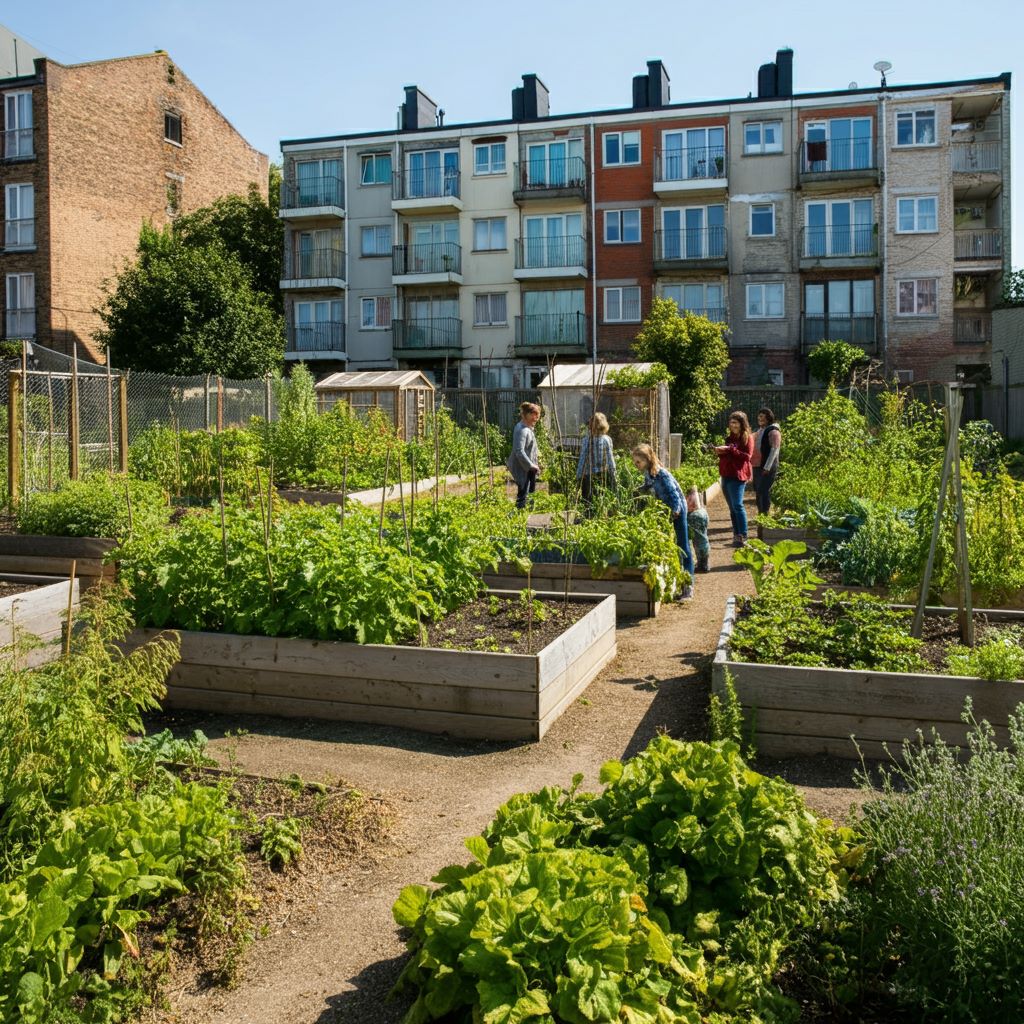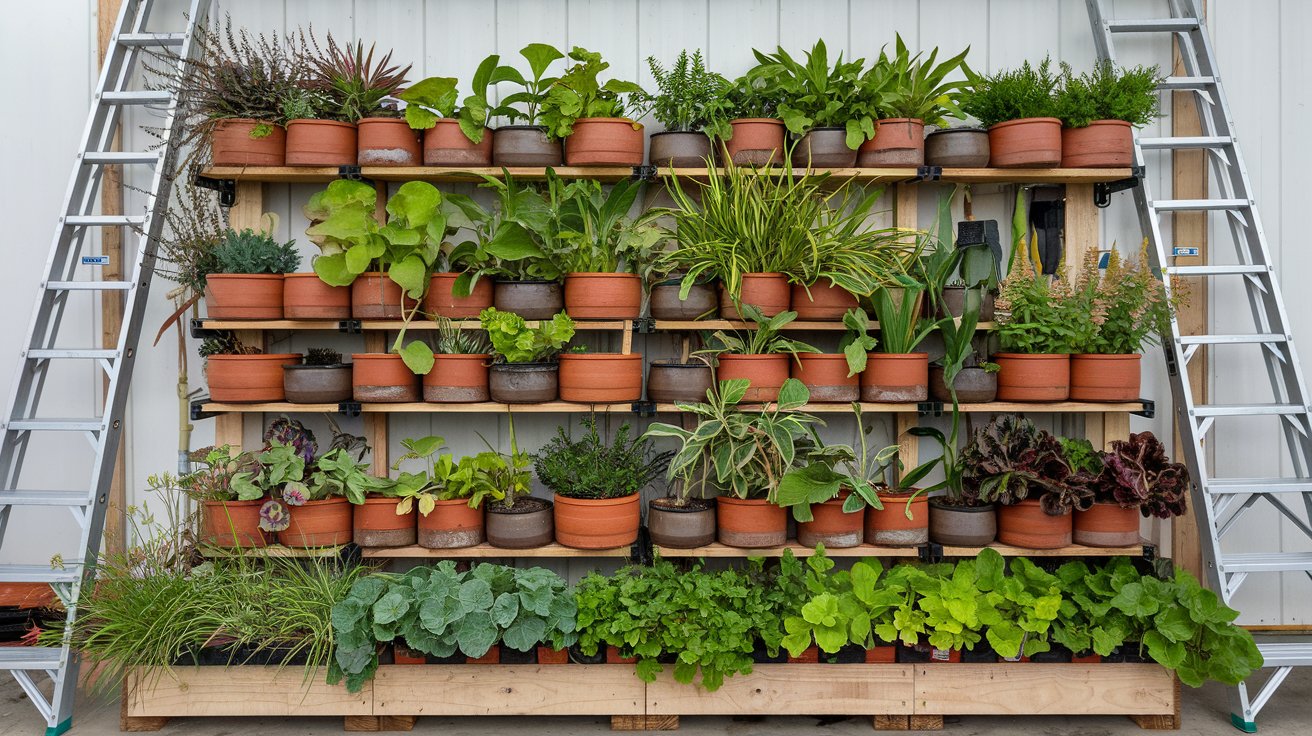Irises are one of the most beloved flowers for garden enthusiasts due to their striking appearance and variety of colors. Whether you’re designing a small urban garden or a sprawling backyard, iris garden ideas offer countless ways to incorporate color and texture into your landscape. Their vibrant blooms are a sure way to create a captivating garden.
Irises come in different types, including bearded, beardless, and crested varieties, making them adaptable to different garden styles. In this article, we’ll explore 10 stunning iris garden ideas to inspire you to create the perfect iris garden. From practical planting tips to creative garden designs, you’ll find everything you need to get started.
Key Takeaways:
- Irises offer vibrant, long-lasting blooms perfect for enhancing any garden space.
- Creative iris garden ideas can help you design a garden that is both functional and beautiful.
- Knowing how to care for irises ensures a healthy, thriving garden.
- There are many ways to incorporate irises into various garden styles, whether traditional, modern, or even water-based.
Table of Contents
What Makes Irises a Great Choice for Your Garden?
Irises are not only beautiful but also incredibly versatile. They come in a wide range of colors, from deep purples to soft whites, and even bolder hues like yellow, pink, and blue. Irises are also known for their unique shape, with their “bearded” flowers having frilled, fluffy edges, while beardless varieties display more delicate and elegant petals. These characteristics make them a favorite among flower gardeners and landscape designers alike.
Here are a few reasons why irises are perfect for your garden:
- Low-Maintenance: Irises are hardy and require minimal care once established, making them a great option for beginner gardeners.
- Long-Blooming Season: Irises bloom in early to mid-spring and can last for weeks, providing continuous color during the growing season.
- Pollinator-Friendly: Irises attract bees, butterflies, and hummingbirds, supporting local ecosystems while enhancing the beauty of your garden.
Essential Tips for Designing an Iris Garden
When designing an iris garden, several factors come into play to ensure your garden thrives. The key to a successful iris garden is choosing the right location, planting in well-drained soil, and selecting the appropriate iris varieties for your climate. Additionally, pairing irises with complementary plants can elevate the overall aesthetic of your garden. Here are some key design tips:
- Choose the Right Location: Irises need full sun to thrive, so select a location that receives at least 6 hours of direct sunlight a day. This ensures strong, healthy blooms.
- Soil Requirements: Well-drained, slightly acidic soil is ideal for irises. If your soil is heavy or clay-like, amend it with organic matter like compost to improve drainage.
- Spacing and Arrangement: Irises should be spaced about 12 to 18 inches apart to allow for proper air circulation and prevent overcrowding. This ensures each plant has room to grow and bloom.
By taking these factors into consideration, you can set the foundation for a thriving iris garden.
10 Stunning Iris Garden Ideas to Spark Your Creativity
Now that you understand the basics of iris care and planting, let’s dive into some creative iris garden ideas to inspire your own backyard design. Whether you’re aiming for a classic, structured look or something more free-form and whimsical, these ideas will help you transform your garden.
1. Classic Iris Bed with Complementary Flowers
Create a traditional rectangular iris bed that showcases the bold beauty of irises. By pairing your irises with complementary flowers like tulips, daffodils, or hyacinths, you can enhance their visual appeal and provide continuous color throughout the growing season. Consider alternating colors in blocks or groupings to create a striking focal point. The mix of textures from different flowers will help your iris bed feel dynamic and layered.
2. Mixed Perennial Iris Garden
A mixed perennial garden offers year-round interest, and irises are the perfect addition to this type of garden. Combine irises with other hardy perennials like lavender, coneflowers, or hostas to create layers of color and texture. Taller irises can be planted in the back of the garden, while shorter plants like lavender and daylilies can fill in the front. This combination creates depth and visual contrast, making your garden more interesting from every angle.
3. Iris Garden Around a Water Feature
For a serene, tranquil setting, consider placing your irises around a pond or water fountain. Irises are water-loving plants, and some varieties, like the Japanese iris, thrive in moist conditions. Planting them near water not only enhances the garden’s aesthetics but also creates a peaceful atmosphere. Pairing irises with aquatic plants like water lilies or rushes will complement the look and provide a natural, harmonious design.
4. Raised Bed Iris Garden
If you have limited space or poor soil quality, a raised bed is an ideal solution for growing irises. Raised beds offer better drainage, which is crucial for irises, and make it easier to control the soil quality. Additionally, they provide an elevated view of your plants, allowing you to enjoy their intricate blooms up close. Raised beds can be customized to fit any space, whether small or large, and they help keep your iris garden neat and organized.
5. Xeriscape Iris Garden for Dry Climates
For regions with low rainfall or drought conditions, a xeriscape iris garden is an excellent choice. Xeriscaping is a landscaping technique that focuses on using drought-tolerant plants to conserve water. Irises like the Louisiana and beardless varieties are great options for xeriscape gardens. Pair them with other low-water plants like succulents, ornamental grasses, and yucca for a low-maintenance yet striking garden.
6. Cottage-Style Iris Border
If you prefer a more relaxed, cottage-inspired garden, irises can be the perfect addition to a flowering border. Their tall, elegant flowers pair beautifully with wildflowers and ornamental grasses, creating a soft, informal garden design. Choose a variety of colors and plant them in drifts to mimic the look of a natural, flowering meadow. Add a rustic garden bench or trellis to complete the charming cottage feel.
7. Iris and Rose Garden Combination
Combine the timeless beauty of irises and roses for a luxurious, romantic garden. The bold, ruffled blooms of irises complement the soft, fragrant petals of roses. For the best effect, plant irises alongside climbing roses or bush varieties for a layered look. This pairing works well in both formal and informal gardens, providing stunning color contrast and a range of textures.
8. Vertical Iris Garden Design for Small Spaces
In urban environments or smaller backyards, vertical gardens are an excellent way to grow irises while maximizing space. Use hanging baskets, wall-mounted planters, or trellises to grow irises vertically. You can plant irises in containers, allowing them to be moved around as needed for the best sun exposure. This design is perfect for people who want to enjoy the beauty of irises but are limited by space.
9. Wildflower and Iris Meadow Garden
If you’re looking to create a low-maintenance, natural garden, a wildflower and iris meadow is a fantastic idea. This design mimics the beauty of natural meadows, with irises acting as the focal point. Combine irises with native wildflowers, such as black-eyed Susans or poppies, for a colorful, eco-friendly garden that supports local pollinators. Wildflower meadows are easy to maintain and perfect for homeowners who want a more sustainable garden.
10. Seasonal Iris Garden with Early, Mid, and Late Bloomers
A seasonal iris garden allows you to enjoy blooms throughout the entire growing season. Plant a combination of early, mid, and late-blooming irises to extend your iris season from spring to early summer. Pairing different varieties with staggered bloom times will create a dynamic, ever-changing garden that remains vibrant for weeks.
Best Location and Soil for Growing Irises
When growing irises, location and soil quality are essential to their success. Irises require full sun to thrive, so choose a site that receives at least 6 hours of sunlight daily. Irises do not fare well in shaded areas, as insufficient sunlight leads to weak growth and poor blooming. Additionally, well-drained soil is crucial. Irises are susceptible to rot in heavy, poorly-drained soil, so consider planting them in raised beds or amend your garden’s soil with organic compost to improve drainage. Irises prefer slightly acidic to neutral soil (pH 6.0–7.0), so test your soil’s pH and amend accordingly.
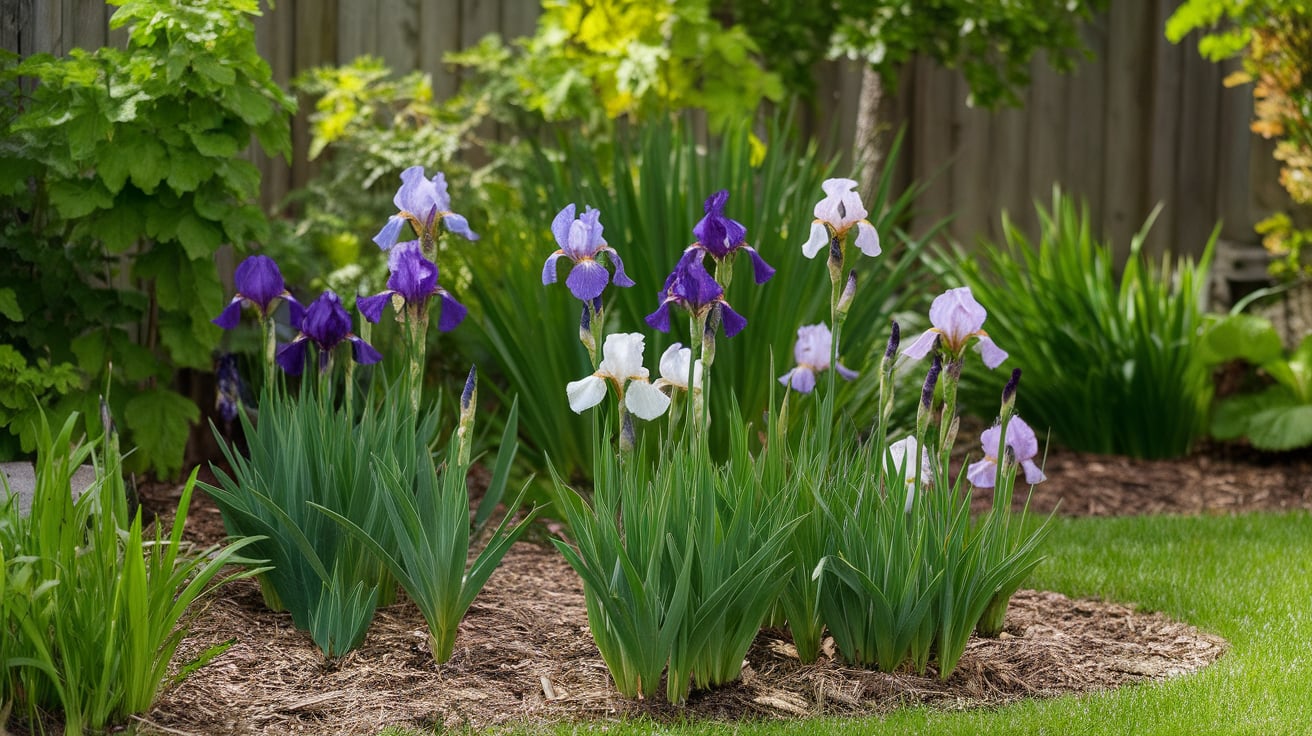
How to Arrange Your Irises in Your Garden
When arranging your irises, keep in mind that they need room to grow and bloom. Irises should be spaced at least 12 to 18 inches apart to allow for proper air circulation. Overcrowding can lead to fungal diseases and poor flowering. Plant taller varieties in the back or center of your garden, while shorter varieties should go in the front or along the edges. Consider grouping irises in clusters of 3 to 5 plants for a more natural look. If you’re planning a formal design, plant them in rows or geometric patterns for a clean, structured aesthetic.
Practical Care Tips for Irises in Your Garden
To ensure your irises thrive, it’s important to follow a few basic care guidelines. Irises are relatively low-maintenance, but they do need attention in the form of regular watering, fertilizing, and pest control.
- Watering: Irises prefer well-drained soil but still need consistent moisture. Water your irises deeply but infrequently, ensuring the soil remains moist without becoming waterlogged.
- Fertilizing: Apply a balanced, slow-release fertilizer in early spring to encourage strong growth. Be careful not to over-fertilize, as this can lead to excessive foliage growth at the expense of blooms.
- Pest Control: Irises are generally pest-resistant, but they may occasionally suffer from aphid infestations or fungal diseases. Regularly inspect your plants for signs of pests and treat them promptly with organic insecticidal soap or neem oil.
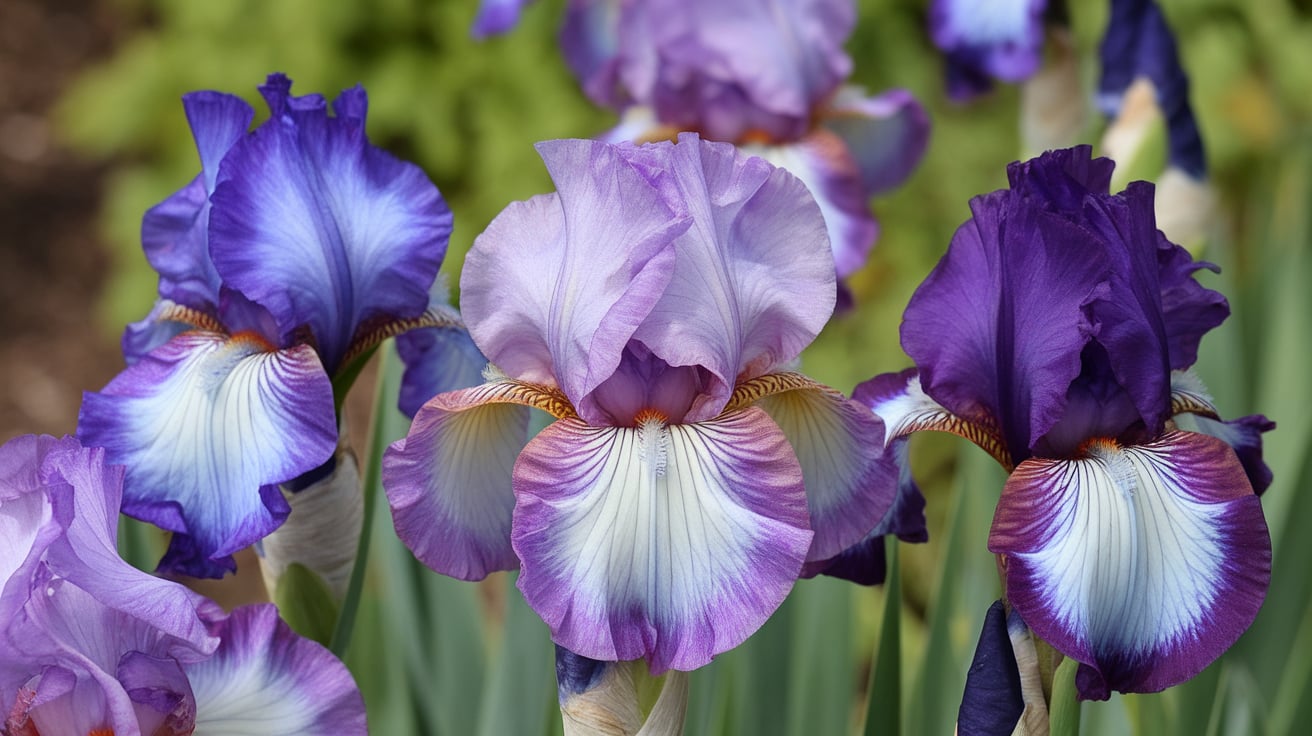
Combining Irises with Other Plants in Your Garden
One of the best ways to showcase your irises is by planting them alongside other complementary plants. The bold blooms of irises pair beautifully with flowers like daylilies, peonies, and coneflowers. You can also mix in foliage plants like hostas or ferns to add texture and contrast. Irises also look stunning when planted next to ornamental grasses, which provide movement and a soft texture to balance their rigid flower spikes. When designing a mixed border, aim to vary plant heights to create layers of visual interest.
Seasonal Care for Iris Gardens: What You Need to Know
Caring for your iris garden doesn’t stop once the flowers are in bloom. Regular maintenance throughout the year ensures the longevity of your plants and keeps them healthy year after year.
- Spring Care: In spring, trim back any old leaves from the previous season to make room for new growth. Apply a layer of mulch to retain moisture and keep the soil cool.
- Summer Care: Once blooming is over, continue watering your irises and deadhead spent flowers. Avoid cutting back the foliage until late summer, as the leaves help store nutrients for the next blooming cycle.
- Fall Care: After blooming season, cut back any remaining dead foliage. In regions with cold winters, provide a light mulch layer to protect the roots from freezing temperatures.
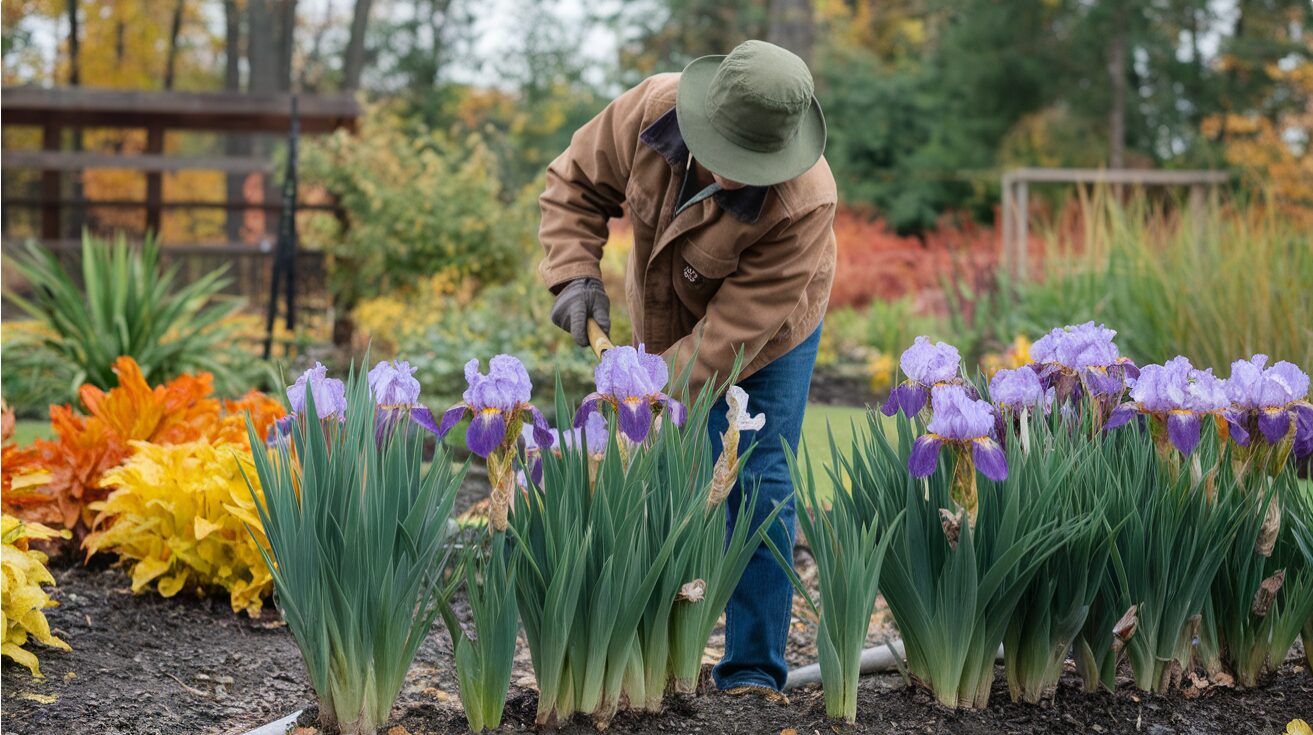
Troubleshooting Common Iris Garden Problems
Although irises are relatively low-maintenance, they can sometimes face issues that impact their health and blooming. Here are some common iris problems and how to address them:
- Yellowing Leaves: This could indicate poor soil drainage or a lack of nutrients. Test your soil and amend it if necessary, and be sure to remove any yellowing leaves.
- Pests: Aphids and iris borers are common pests. Keep an eye out for any insects or larvae, and treat your irises with organic insecticides if necessary.
- Poor Blooms: This may be due to overcrowding, insufficient sunlight, or old rhizomes. Divide your irises every 3 to 5 years to ensure they have space to grow and bloom.
Conclusion: Bring These Iris Garden Ideas to Life
By now, you should have plenty of inspiration and practical tips to create your own stunning iris garden. Whether you’re aiming for a traditional iris bed, a vertical garden, or a natural, wildflower-inspired meadow, there are endless ways to incorporate irises into your backyard. So roll up your sleeves, gather your supplies, and start planting! Your beautiful iris garden awaits.
Frequently Asked Questions
How do I arrange my irises in my garden?
Space your irises 12-18 inches apart, grouping them in clusters for a natural look or arranging them in rows for a formal appearance. Plant taller irises at the back and shorter ones in the front.
How to create an iris garden?
Choose a sunny spot, prepare well-drained soil, and select iris varieties that suit your climate. Plant irises in clusters, spaced 12-18 inches apart, and pair them with complementary flowers for a layered look.
What is the best place to plant irises?
Plant irises in a location that gets at least 6 hours of sunlight per day. Well-drained, slightly acidic soil is also important for healthy iris growth.
What month is best to plant irises?
The best time to plant irises is in late summer or early fall, typically between August and September. This allows the plants to establish strong roots before winter.
Can irises grow in containers?
Yes, irises can thrive in containers. Ensure the container has adequate drainage and is large enough to accommodate the iris rhizomes.
How often should I divide irises?
Irises should be divided every 3 to 5 years to maintain their health and ensure abundant blooms.

Robert Martin is a passionate blogger and versatile content creator exploring the intersections of personal finance, technology, lifestyle, and culture. With a strong background in financial literacy and entrepreneurship, he helps readers make smarter money moves, build sustainable side hustles, and achieve financial independence.
Beyond finance, Robert shares his insights on home decor and gardening—offering practical ideas for creating beautiful, functional living spaces that inspire comfort and creativity. He also dives into the dynamic worlds of sports and celebrity news, blending entertainment with thoughtful commentary on trends that shape today’s pop culture.
From decoding the latest fintech innovations to spotlighting everyday success stories, Robert delivers content that’s informative, relatable, and actionable. His mission is to empower readers to live well-rounded, financially confident lives while staying inspired, informed, and ahead of the curve.


